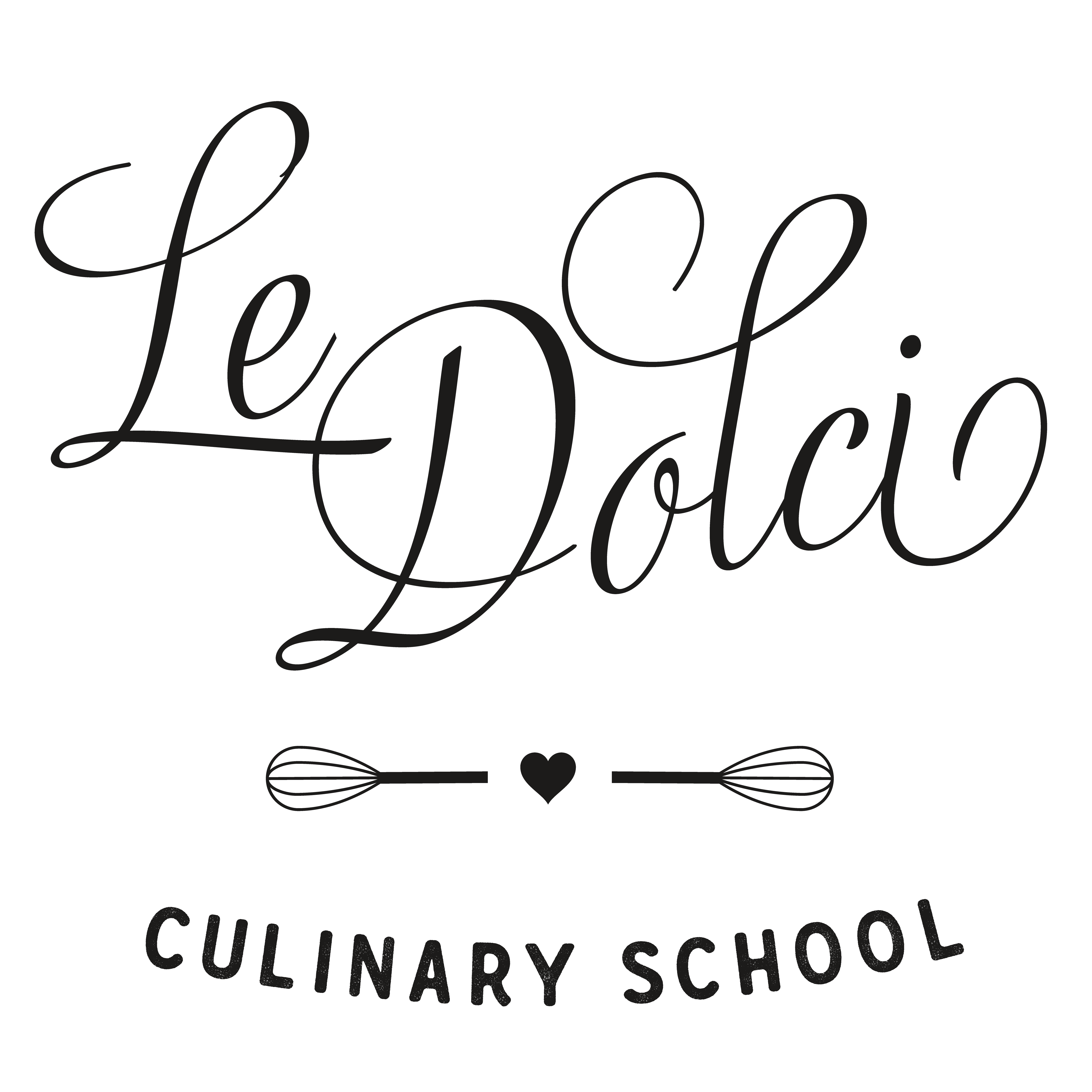Chocolate Masterclass Level 1 - Recipes
Truffles
Yield: 50 truffles
- 220g milk chocolate for ganache
- 150ml whipping cream
- 25g glucose
- 50 milk chocolate truffle shells
- 400g milk chocolate for dipping
- 300g whole hazelnuts or nuts of your choice
Method
- Place the praline paste and 220g milk chocolate in a bowl.
- In a pot bring the cream and glucose to a boil.
- Pour the hot cream over the milk chocolate and praline and allow to sit for 2 to 5 minutes.
- Stir the mixture until well combined.
- Cool the ganache to below 35°C, then fill your shells
- Temper chocolate according to package, cap shells, coat in remaining milk chocolate and roll in roasted, skinned and finely chopped nuts.
Salted Caramel Ganache
Yield: 50 truffles
- 275 g 35% cream
- 100 g sugar
- 80 g water
- 20 g glucose
- 500 g milk chocolate
- 40 dark chocolate truffle shells
- 400 g dark chocolate, tempered
- Fleur de Sel as needed
Method
- Warm cream and set aside.
- Combine sugar, water, and glucose in a pot.
- Cook until sugar has caramelized.
- Gradually add cream to caramelized sugar.
- Pour caramel over milk chocolate and stir until ganache is smooth.
- When filling has cooled, fill shells half full and add a few flakes of Fleur de Sel into shell and then top up with more filling.
- Temper chocolate according to package, once chocolate is tempered cap shells.
- Dip in dark and white chocolate and garnish with Fleur de Sel.
Chocolate is produced from cocoa beans, which are the seeds from the cacao tree that grows in tropical regions near earth’s equator.
After cocoa beans are harvested, they are fermented, dried, and then roasted to develop their flavour. Following roasting, the beans are cracked and the shells removed. The bits of cocoa that remain are called nibs, which contain more than 50% fat in the form of cocoa butter.
The cocoa nibs are ground into a paste known as chocolate liquor or cocoa mass, which releases the cocoa butter from the nibs. Then the cocoa solids (cocoa powder) are separated from the cocoa butter using a powerful hydraulic press.
To produce chocolate, cocoa powder is blended with sugar and, in the case of milk chocolate, milk solids. This mixture is further ground for hours, or even days, to develop a fine, smooth texture. The resulting liquid chocolate is then tempered and molded into blocks or callets (chips) for sale.
Couverture is the name given to chocolate of the highest quality. This type of chocolate contains no fat other than pure cocoa butter. Couverture chocolate must go through a process called tempering before it can be used to make confections.
Chocolate Tempering
When melted cocoa butter cools and solidifies, it is able to form six different kinds of crystals. Some of these crystals melt at a lower temperature, some at a higher temperature. The two crystal forms with the highest melting points (V and VI) are considered stable, while the other four (I through IV) are unstable because they melt too easily.
The goal of tempering chocolate is to have many stable crystals (mostly V). When chocolate is tempered, stable crystals begin to form first. Stirring the chocolate mixes these crystals through the mass of chocolate, causing more stable crystals to form. In melted chocolate that has been tempered properly, many high-melt-point, stable crystals are well distributed through the chocolate, therefore the chocolate will solidify quickly when cooled and have good crystal structure.
The high melt-point crystals (stable) give high-quality chocolate its shine and “snap.” If the chocolate contains too many unstable crystals, it will have a dull surface showing streaks of cocoa butter (bloom), and have a poor, crumbly texture.
3 Steps:
Melting: Place chocolate in a bowl over hot water (Bain Marie/water bath), never over direct heat because chocolate is easily damaged by heat, which destroys both flavour and texture. Stir constantly while melting to ensure heat is distributed evenly; the chocolate must be brought to a temperature high enough to completely melt all fat crystals, including the high-melt-point ones.
Cooling or Precrystallizing: Remove chocolate from heat; continue stirring while chocolate cools. Stable fat crystals will begin to form first; stirring ensures these stable crystals are well distributed through the chocolate. Seeding is the term used to describe the process of adding properly tempered chocolate, which contains mostly stable crystals, to the melted chocolate, to introduce the most stable fat crystals and distribute them through the melted chocolate as it cools (30% of total weight is ideal for seeding).
Rewarming: Once the chocolate has been properly tempered, it sets very quickly and may become too thick to work with, therefore it must be warmed slightly to continue with dipping or molding. Correct rewarming raises the temperature above the melting point of form IV crystals; at this point, all unstable crystals have melted and the chocolate contains only stable crystals. Rewarming must be done carefully to ensure the temperature of the chocolate does not exceed the melting point of stable crystals, if this happens the chocolate will come out of temper and the process will need to be started over again.
The maximum temperature for melting, as well as the optimal working temperature for tempered chocolate is usually listed on the chocolate packaging. Always refer to this temperature guide as the temperatures vary slightly by brand and type of chocolate.








